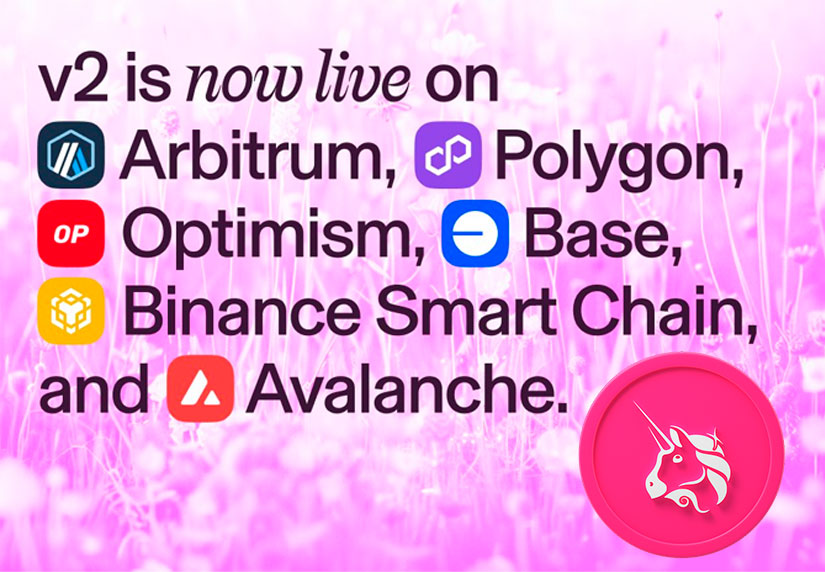TL;DR
- Uniswap v2 Deployment: Uniswap has expanded its v2 protocol to six new chains including Arbitrum, Polygon, Optimism, Base, Binance Smart Chain (BSC), and Avalanche, marking a significant development in the DeFi sector.
- Cost-Effective and User-Friendly: The deployment of Uniswap v2 is expected to result in significant gas savings for users and provide a simpler experience for liquidity providers, as v2 pools cover the entire price range by default, reducing the need for active management.
- Enhanced Security: With the past year seeing losses exceeding $55 million due to exploits, bugs, and rugs in v2 forks across various platforms, Uniswap v2 aims to provide a safer trading environment by enabling swaps with the official Uniswap v2 contracts via the Uniswap Interface.
In a significant development for the decentralized finance (DeFi) sector, Uniswap has announced the deployment of its v2 protocol on six new chains. The chains include Arbitrum, Polygon, Optimism, Base, Binance Smart Chain (BSC), and Avalanche.
You all love v2 so much, we’re bringing it to you everywhere 🪐 pic.twitter.com/OQLrPH0A2z
— Uniswap Labs 🦄 (@Uniswap) February 20, 2024
Uniswap v2 pools cover the whole price range by default, minimizing the demand for active liquidity pooling. This expansion is expected to provide users with a simpler experience, especially for liquidity providers (LPs). Unlike v3, pools on v2 cover the entire price range of the pool by default, reducing the need for active management and monitoring as an LP.
The deployment of Uniswap v2 on these chains is expected to result in significant gas savings for users. Swaps on v2 are incredibly cost-effective, averaging under a dollar on Layer 2 solutions like Optimism and Arbitrum, compared to the $35 average cost to swap on Ethereum. Plus, users benefit from almost no Miner Extractable Value (MEV) on Layer 2s, due to sequencers.
Security in Uniswap v2: Ensuring a Safer Trading Environment

Uniswap v2 is designed to provide a more gas-efficient solution for users who are setting up new pools. While Uniswap v3 offers customizable options for pool deployments to enhance capital efficiency, Uniswap v2 provides a full range by default, thereby streamlining the process of creating new pools.
Security is a crucial component of this development. In the past year, exploits, bugs, and rugs in v2 forks have led to losses exceeding $55 million across various platforms such as Binance Smart Chain, Base, and Arbitrum. By conducting swaps with the official Uniswap v2 contracts via the Uniswap Interface, traders can benefit from a safer trading environment.
Users can now supply liquidity, create pools, and swap on v2 instantly from the Uniswap interface. This development is expected to boost the adoption of Uniswap’s native token and its utility. In conclusion, the deployment of Uniswap v2 on these six chains represents a significant step forward for the DeFi sector, offering users a simpler, more cost-effective, and secure trading experience.


